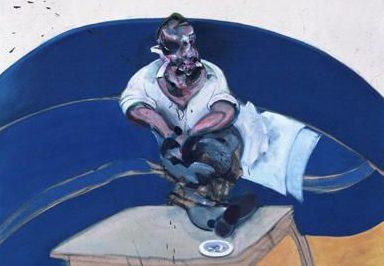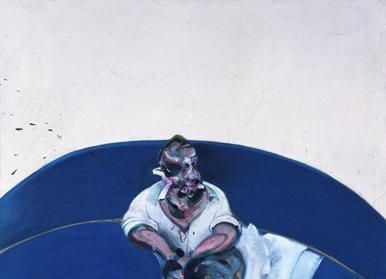Norena Shopland casts an eye over the recent trend of queer tours of museum collections and sees postcards from the edge of history.

Queer Tours are becoming quite the thing – an LGBT+ historian ‘queers’ a collection and the public is invited in to view those items. In Britain, London’s Victoria and Albert Museum was one of the first. In 2014, ‘queer performer’ Bird la Bird gave a one-off whistle-stop tour called ‘Swoosh Around the V&A’. A year later the museum’s LBGTQ Working Group arranged the first of many tours – soon to be so popular they would become weekly.
Four years later the British Museum launched their self-led LGBTQ trail entitled Desire, Love, Identity: LGBTQ histories, now consisting of two trails. Cambridge University Museums runs Bridging Binaries LGBTQ+ Tours across seven of their museums (which includes gay penguins). The Museum of London runs Queer City monthly and the Tate, Oxford University Museums and others run similar events. Feedback from London’s Science Museum tour in 2018 revealed that over fifty per cent of respondents had not visited the museum within the past year.
In March, Amgueddfa Cymru National Museum Wales (AC-NMW), in association with Pride Cymru and Dan Vo, an LGBT+ historian from the V&A specialising in queering collections, held its first Queer Tours: LGBTQI+ at their museum in Cathays Park, Cardiff – the first to be held in Wales. The blurb from AC-NMW invites visitors to ‘look at our art through a “queer” lens. We will offer a safe space for you to have conversations about diversity and representation, to celebrate our LGBTQ+ community, and acknowledge the existence and contribution of LGBTQ+ individuals throughout history.’
I joined the tour to see what was being offered.
The first person we are introduced to is Francis Bacon, as we stand in front of his self-portrait from 1963. Bacon is well-known in queer history and so the portrait is of a gay man by a gay man. So far so good. We are then introduced to a statuette of Emperor Hadrian, also well-known in queer history, followed by a landscape painting by Thomas Patch, an English painter supposedly banished from Rome due to a homosexual indiscretion. Now we have a non-queer image by someone who may or may not have had either a same-sex encounter or a relationship. No other evidence exists.
Similarly, Frederic Leighton, whose statute Athlete Struggling with a Python adorns AC-NMW publicity for their queer tour, is included in the ‘possibly’ homosexual category as there has been much debate about Leighton’s sexual orientation. He crafted several of what are deemed homoerotic male statues. However, these were made at a time when many sculptors were fascinated with male musculature – although this context is not mentioned. Furthermore, these homoerotic statues were often used as coded messages – having one on your shelf could be a veiled come-on. This too is not mentioned.
This is the problem with LGBT+ history – due to laws against male homosexuality and social unacceptance for all non-heterosexual and cisgender people, often we are only left with ‘possibly’ and tenuous links. For example, in 2018 the Science Museum in London used a Spitfire aeroplane in their Queering the Science Museum tour to talk about Roberta Cowell, the first British trans woman because she flew Spitfires during WWII. At AC-NMW landscape paintings by Patch and John Singer Sargent are used (Sargent also comes under the ‘possibly’ category). The difficulty is that there is no historical context or explanation included to explain ‘possibly’ – instead we are given, in a sense, a series of postcards from the edge of history with no clue as to geographical location.
Some possible narratives have also been missed. Two amazon statues by Welsh artist John Gibson are pointed at but not discussed. Yet so much could have been built around this – Gibson and his partner Penry Williams (who is included in the tour) lived in Rome in order to enjoy a more liberal life free from British legal and societal constraints. They also went to join the many artists who flocked there in the mid-to-late nineteenth century. Among them was a large coterie of women we would now consider lesbians – led by the indomitable Charlotte Cushman, an American actor who had several ‘wives.’ In this group were several American female sculptors – Edmonia Lewis an African-Native American and the only black woman sculptor of the time; Harriet ‘Hatti’ Hosmer, the most famous American female sculptor of the nineteenth century and Emma Stebbins whose “Angel of the Waters” (1873) stands on the fountain in New York’s Central Park. The statue with its large soaring wings has always captured the imagination and it has been extensively copied in all art mediums; even coming to life in Angels in America (2003) a TV miniseries centred on a gay man living with AIDS and watched extensively in this country. Gibson and Williams were friends with these women and Gibson taught Harriet Hosmer. His amazons complement a number of powerful female statues being produced for the first time by women – and lesbian women at that! It would be interesting to know if the museum holds any works by the other myriad artists in this Rome group.
On the subject of AC-NMW’s collections, what sets queering a Welsh museum apart from those in England? Most national museums hold international collections and understandably are keen to show them off – but does this mean we can expect to see Francis Bacon, Emperor Hadrian, John Singer Sargent and other famous LGBT+ people reappearing in similar tours? While Welsh artists are included, notably Cedric Morris, Gibson and Williams, Gwen John and the Ladies of Llangollen there are many more that are not. Personally, I would like to see more Welsh people included (and they do exist in AC-NMW collections although some are only in the stores). Or maybe do two tours? One of Welsh LGBT+ and the other of international? It would certainly be a way to increase visitors. Or include self-led tours?
Another bone of contention, and one I have been nagging about for many years, is that there is still no permanent representation in AC-NMW and indeed the great majority of British museums. While many museums take advantage of celebratory days and months to host pop-up exhibitions and events, outside these set periods there is no inclusion of LGBT+ people. In terms of heritage, it’s like we’re allowed in the family home for parties but never allowed to stay. As I said in my keynote speech at Pride Cymru’s history month event Leap into Sight ‘when the exhibition banners come down and the tours are over, where are we?’
At the moment the AC-NMW is intending to run the queer tours monthly depending on demand (and after the COVID19 shutdown). As I was leaving the curator said to me, ‘it’s a beginning’. Indeed, it is – a very good beginning and I eagerly look forward to future developments.
Norena Shopland – historian and author of Forbidden Lives: LGBT stories from Wales (Seren Books); co-author of Queering Glamorgan: An LGBT+ research guide (Glamorgan Archives); The Veronal Mystery (Wordcatcher Publishing); Women in Male Attire: their fight to wear trousers (Pen and Sword Books forthcoming June 2021) and somewhat regular contributor to Wales Arts Review.












